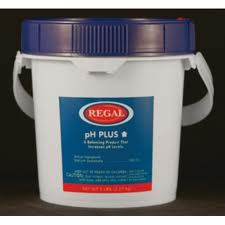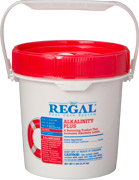Salt systems will actually increase your pH and Alkalinity
Salt chlorine generators are fairly new to the pool market, and they are extremely useful and innovative for pool owners. What some people may not be aware of when purchasing a salt chlorine generator is they actually increase your pool’s pH and Alkalinity. Before we discuss that, let’s take a look at what exactly pH and Alkalinity are.
pH:
The pH is basically a measure of the active acidity in a pool or spa. Scientifically speaking it is the measure of the concentration of hydrogen ions in the water. The greater the concentration of active hydrogen ions, the lower the pH.
pH is measured on a scale from 0 to 14. The smaller the number (less than 7.0) the more acidic the water. The ideal range for pool water is between 7.2 and 7.8. When the pH level approaches or goes below 7.2, the water becomes corrosive. This can damage vinyl and plaster surfaces, sometimes even pipes and equipment. When the pH levels go above 7.6, chlorine disinfectants are less effective in killing bacteria and algae. This can cause cloudy water, scale on the equipment, and on the pool walls.
When pH is too high, add acid: the acid combines with the water, increasing the hydrogen ion concentration- lowering the pH.
When pH is too low, add sodium carbonate: the carbonate ions from sodium carbonate combine with hydrogen ions to reduce the hydrogen ion concentration. (sodium carbonate is NOT the same as sodium bicarbonate ‘baking soda’)
Alkalinity:
Alkalinity, also known as ‘total alkalinity’, is the measure of the buffering capacity of water. It is its ability to resist a change in pH.
The ideal alkalinity level for your pool is between 80-120 ppm. When this number gets too low, the pH level can fluctuate widely and the water can become corrosive. The goal is to keep everything in balance.
To lower total alkalinity, add acid: the acid reacts with the bicarbonated in the water, converting them, and reducing the total alkalinity.
To raise alkalinity, add sodium bicarbonate: this adds to the total bicarbonates in the water, raising the alkalinity.
Total alkalinity and pH are closely related, so it is important to test your pH after adjusting the total alkalinity and vice versa.
So how does salt water affect pH and alkalinity? Simple. Anything that enters your pool has a pH. That includes humans, animals, rain, dirt, leaves, bugs, and yes, salt. Salt itself does not drastically change the pH or total alkalinity. However, the liquid form of chlorine generated by the salt cell will cause high pH swings. This is very common during seasons when source water is already high in alkalinity. This poses a unique problem for salt water pool owners: the challenge to constantly maintain their pH.
If you allow pH and total alkalinity to rise without any action, it will result in water that may allow staining and scaling. Salt pool owners who choose to perform no maintenance on their pool aside from adding salt usually find out in a couple of years they have to deal with scaling problems, plaster staining, or unusual water colors.
One of the simplest ways to avoid all these issues is to wash the generator cell with an acid wash a couple times per season. This, on top of regular maintenance, should keep your pool running smoothly.
Still not sure? Contact Ask the Pool Guy and we’d be happy to answer any questions for you.
